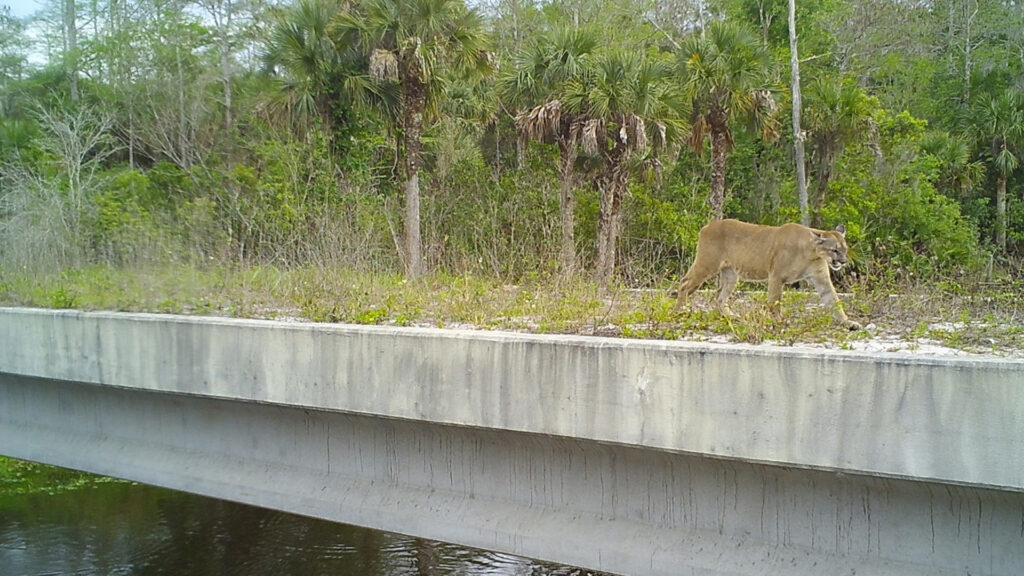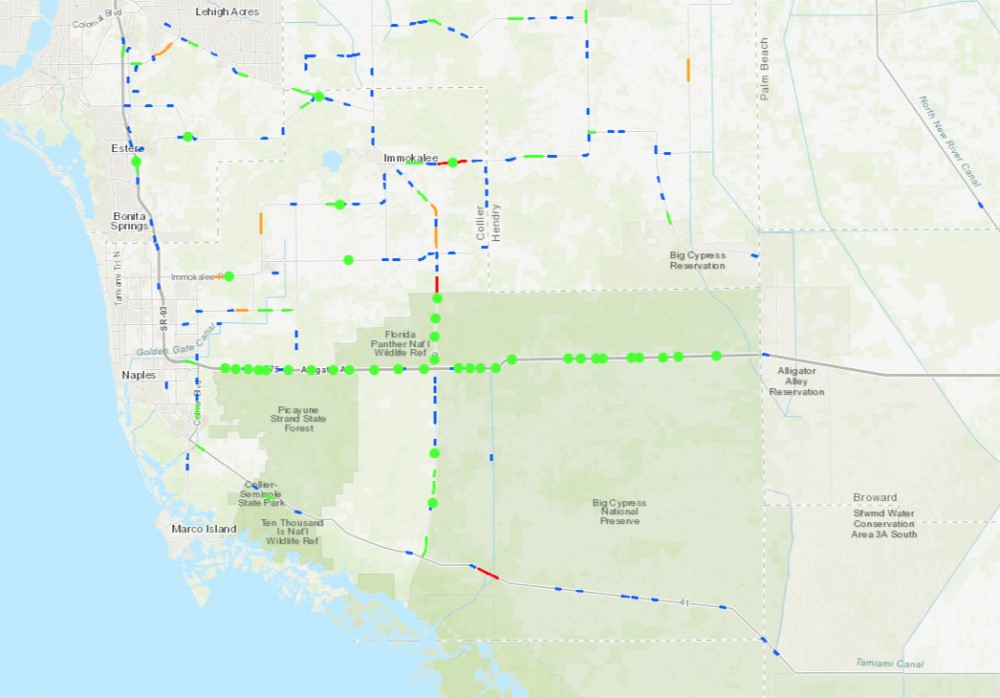By Mia McCormick, Environment Florida
Each year, animals that are at risk of extinction die when cars and creatures collide on Florida roadways. It’s the No. 1 cause of death to our endangered Florida panthers.

From October 2020 to October 2023, 66 panthers have died in vehicle collisions. It may not sound like a lot, especially compared to common roadkill such as possums or raccoons. But with a panther population somewhere between 120 to 230, it’s a substantial number. This year, estimates of the panther population may dip even lower than that.
Nationwide, there are nearly 2 million crashes involving wildlife a year. Wildlife are not the only victims of these collisions. Florida ranks ninth in the nation in human deaths caused by wildlife-vehicle collisions. The solution: specially designed overpasses or underpasses that allow wildlife to cross roads without interacting with motorists. Studies show that wildlife crossings are the most effective way to mitigate wildlife-vehicle collisions.
“While they are no replacement for keeping roadways out of panther habitat, crossing structures are our best chance to connect habitat and reduce vehicle mortalities. Crossings are preferred over signs or other such systems that rely on motorist response or slowing their speed,” said Amber Crooks, environmental policy manager at Conservancy of Southwest Florida.
What is a wildlife crossing

Florida has approximately 200 wildlife crossings across the state. The Florida Department of Transportation’s (FDOT) ESRI map shows bridges that wildlife are currently using to cross state roadways. Some were designed specifically for wildlife, while others are simply places where wildlife crossings have been documented.
Many contain additional features like fencing used to direct animals to the crossing. Research shows that together these features reduce vehicle animal collisions by 97%. Sometimes, the crossing is a bridge over the roadway or a culvert built to create an underpass; sometimes it’s a shelf that’s built along a waterway underneath. Either way, it’s a connection for wildlife to move safely from one side of the road to the other.
The majority of panther deaths happen in Lee, Hendry and Collier counties. These fall in FDOT’s District 1. Right now, there are nine fully funded projects in District 1 that include wildlife protection features like fencing and some wildlife crossings. FDOT is also planning 14 more projects which include wildlife crossing features, but they are not currently funded for construction.
The grants
FDOT has applied for a federal grant that is a part of a pilot program created under the Bipartisan Infrastructure Law. The Wildlife Crossings Pilot Project will provide $350 million in grants over five years to states and communities specifically to build these structures. The grant is competitive; currently FDOT has applied for about $7.4 million to cover most of the $9 million cost to put in a large concrete culvert underneath U.S. 27 in Highlands County.
Two more crossings are planned in a large project on S.R. 29 in Glades County. FDOT is seeking $25 million in grant money for that project as part of the Rural Surface Transportation grant program, also established in the Bipartisan Infrastructure Law. Transportation officials should find out if they’ll get the two federal grants around the first of the year.
Federal dollars are not the only place to find funding for wildlife crossings. Planned crossing construction near Interstate 4 at S.R. 33 in Polk County is coming from the state’s Moving Florida Forward Infrastructure Initiative, proposed and passed by Gov. Ron DeSantis.
Wildlife crossings need your support

Based on the effectiveness of wildlife crossings and the demonstrated need for them, increased funding at both the state and federal levels could spare the lives of animals and humans, and hundreds of thousands of taxpayer dollars in damage and cleanup.
We urge you to write your legislator today in support of wildlife crossings! Ask them to support initiatives that include consideration and funding for these life-saving projects. More wildlife crossings mean lower risk to our unique wildlife and drivers.
Mia McCormick is an advocate with Environment Florida. This piece was originally published at https://environmentamerica.org/florida/articles/wildlife-crossings-needed-to-protect-panthers/.
If you are interested in submitting an opinion piece to The Invading Sea, email Editor Nathan Crabbe at ncrabbe@fau.edu. Sign up for The Invading Sea newsletter by visiting here.



